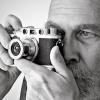Will using M mount lenses on my SL2-S solve my problems?
-
Recently Browsing 0 members
- No registered users viewing this page.
-
Similar Content
-
- 9 replies
- 610 views
-
- 31 replies
- 12,156 views
-
- 4 replies
- 155 views
-
- 1 reply
- 209 views
-
- 5 replies
- 324 views
-



Recommended Posts
Join the conversation
You can post now and register later. If you have an account, sign in now to post with your account.
Note: Your post will require moderator approval before it will be visible.